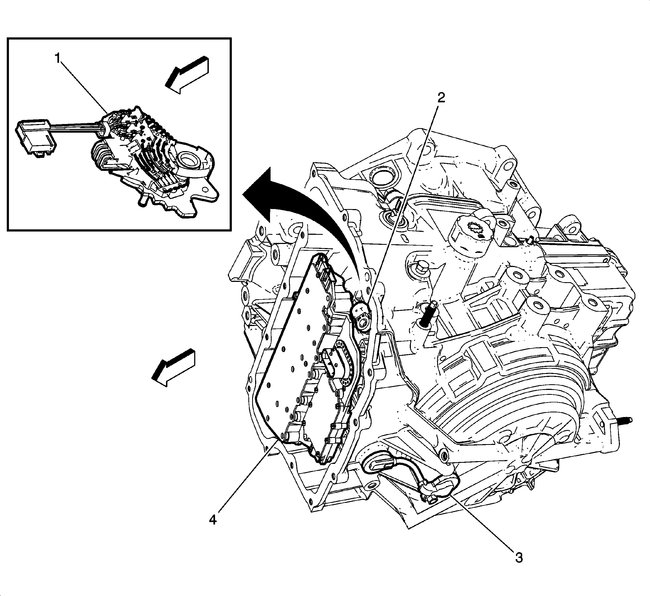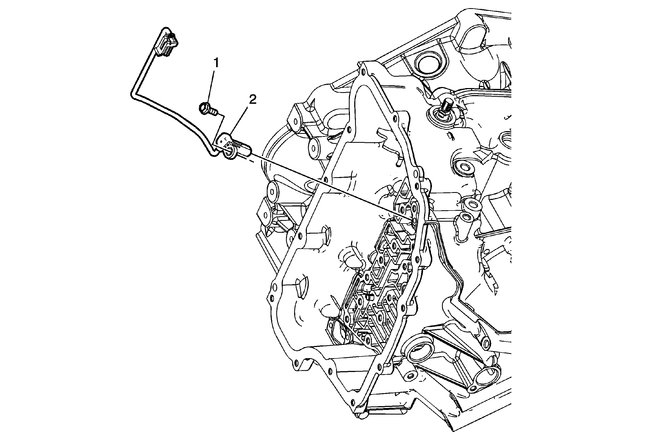Hi and thanks for using 2CarPros.
See the first picture for location. Here is a list of components which correspond with the picture:
1 - B15 Transmission Internal Mode Switch
2 - B14A Transmission Output Shaft Speed Sensor
3 - B14C Transmission Input Shaft Speed Sensor
4 - Q8 Control Solenoid Valve Assembly
_________________________________________
The directions for replacing them are in pictures 2 and 3.
_______________________________________
Once the sensor is replaced, then the system needs to complete a relearn. This procedure requires a scanner to complete.
Here are the adaptive relearn procedures.
TRANSMISSION ADAPTIVE VALUES LEARN
Transmission Adaptive Values Learn
Transmission Adaptive Values Learn is a procedure for 6 speed automatic transmissions in which a series of tests are run to allow the transmission control module (TCM) to learn individual clutch characteristics. Once the clutch data is learned, Transmission Adaptive Values Learn translates it into the adaptive data cells, which the TCM uses for clutch control during shifts. The scan tool provides initiation of the Transmission Adaptive Values Learn procedure. This procedure is to be used following transmission repair.
The Transmission Adaptive Values Learn procedure must be performed when one of the following repairs have been made to the vehicle. Failure to perform the procedure after one of the following repairs may result in poor transmission performance, as well as transmission DTCs being set:
* Transmission internal service/overhaul
* Valve body repair or replacement
* Control solenoid valve assembly replacement
* TCM software/calibration update
* Any service in response to a shift quality concern
Note: Ensure the following conditions are met before performing the Transmission Adaptive Values Learn procedure:
* Drive wheels are blocked
* Parking brake is applied
* Service brake is applied
* Zero percent throttle and no external engine RPM control
* Transmission fluid temperature (TFT) is between 70-100°C (158-212°F)
* Transmission gear selector has been cycled from Park to Reverse 3 times in order to purge air from the reverse clutches.
1. Use the scan tool to navigate to Transmission Adaptive Values Learn by selecting the following:
1. Module Diagnosis
2. Transmission Control Module
3. Configurations/Reset Functions
4. Transmission Adaptive Values Learn
Note: If at any time during the procedure, required conditions are not met, Transmission Adaptive Values Learn may abort and the process may need to be started again from the beginning.
2. Use the scan tool to perform the Transmission Adaptive Values Learn procedure. As the procedure is being performed, the scan tool data display will provide operator instructions. Follow the scan tool instructions, as required.
3. Once the procedure is complete, shut OFF the engine and power down the TCM. You will lose communication to the scan tool.
Note: When the Transmission Adaptive Values Learn procedure is completed, the transmission will remain in a neutral state.
4. Restart the engine. This will complete the Transmission Adaptive Values Learn procedure.
Troubleshooting
If the Transmission Adaptive Values Learn will not run and the above stated conditions have been met, ensure the following:
* TFT is between 70-100°C (158-212°F)
* Brakes and brake switch are functioning properly
* No active DTCs
* Closed throttle and engine RPM increases above 1,500 RPM while at entrance of the test
* Park/Neutral position switch is properly adjusted and functioning
* Line pressure control is able to provide 1,000 kPa and is within specifications
* Vehicle is not moving or vibrating excessively
* Clutches are properly assembled
_______________________________________________________
Let me know if this is what you needed or if you have other questions.
Take care,
Joe
Images (Click to make bigger)
Saturday, February 16th, 2019 AT 9:11 PM





